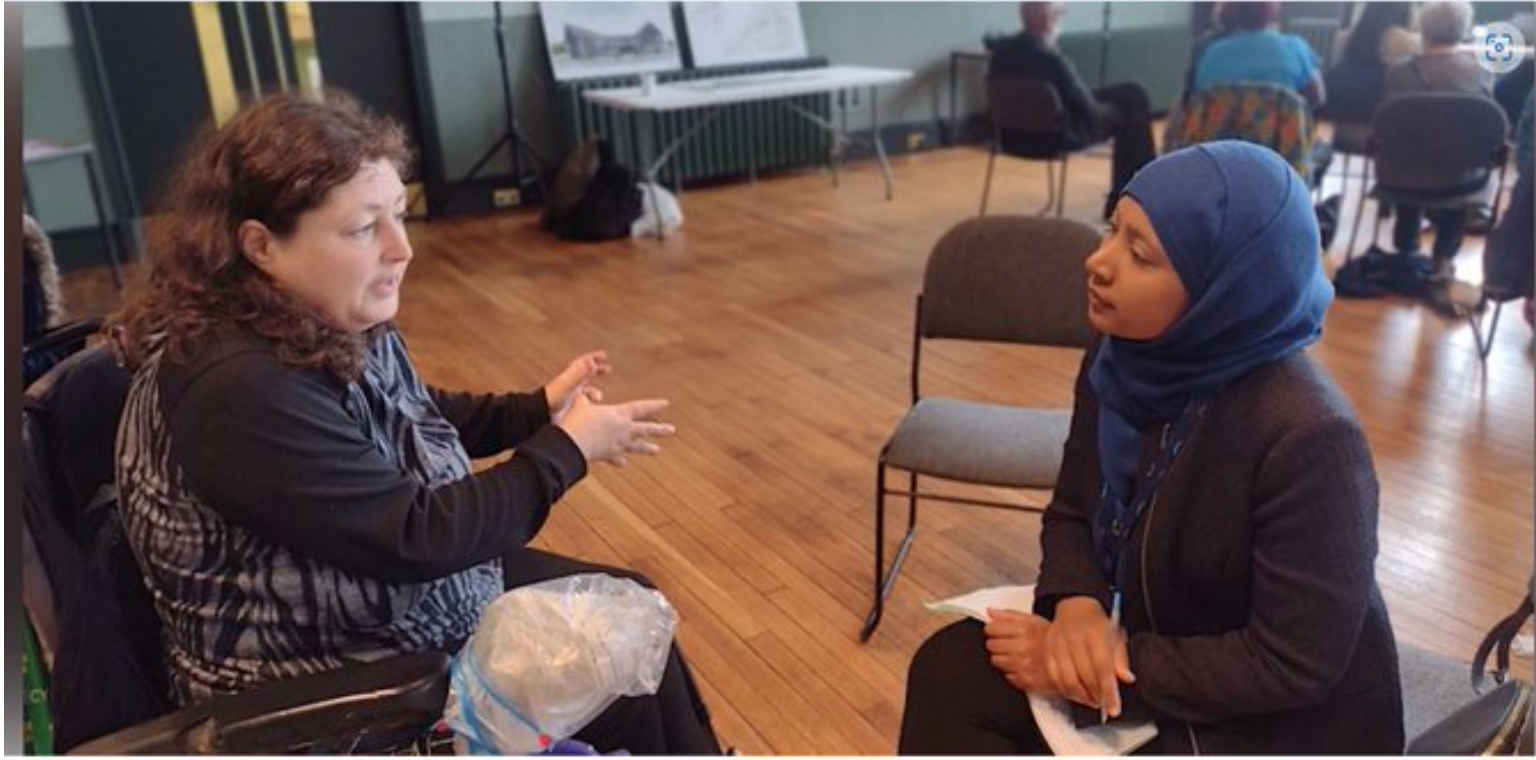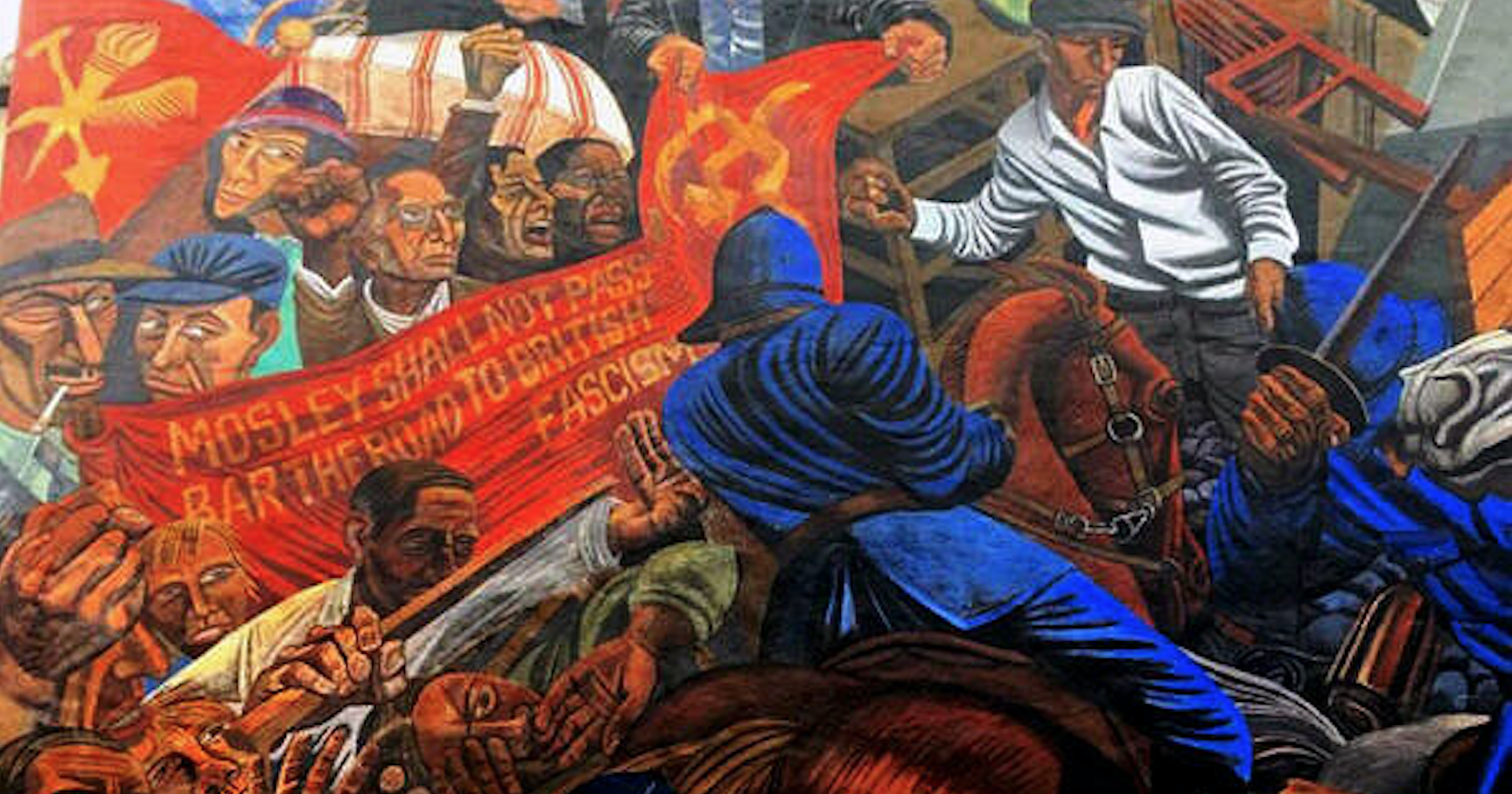By Alva Gotby
It is hard to deny that we are facing a crisis of evictions and homelessness. Right now we’re in a period of waiting for the crisis to happen, as it’s being temporarily held at bay by some minimal protections for renters. At least until the end of May, most tenants will get a 6 month notice period if they are served an eviction notice. This means that people will be able to stay in their homes for a long period of time after receiving an eviction notice – especially if they wait for their landlord to take them to court for a possession hearing, which can be a lengthy process. This small victory would not have been possible without the joint effort of the housing movement and its allies. Together, housing organisations forced the government to put some measures in place to protect renters, despite long standing Tory loyalty to landlord lobby organisations such as the National Residential Landlords Association.
While we should celebrate these victories, they are temporary, and they don’t address the causes of evictions and homelessness. Renters in this country have few legal rights, and an extension of the notice period will do nothing to solve this underlying problem. Perhaps more significantly, the imbalance of power between landlords and renters means that many eviction cases won’t go to a possession hearing or even be based on a valid eviction notice – many renters simply leave when their landlord tells them to do so. Landlords often rely on harassment and intimidation if their tenants don’t leave, which is illegal but often difficult to prove. Police tend to help landlords evict their tenants illegally, perhaps instinctively acting as the protectors of private property even when the law is on the side of tenants.
This means that unless the government takes unprecedented measures to protect renters, undoing the legacy of all governments in this country since at least the 1980s, many renters will be forced to leave their homes. This crisis is but a symptom of several deeper crises – the public health crisis, the economic crisis, and the preexisting housing crisis. We might begin to question the validity of the language of “crisis” when the so-called housing crisis in particular is a more or less permanent condition, one that has marked working-class lives for decades. The term crisis, while helpful in instilling a sense of political urgency, inevitably gestures towards a moment before the crisis – a time of normalcy. In the imagination of the broad left, that time was the moment before neoliberalism and austerity, when the state took responsibility for attending to people’s housing needs. While there is some truth to this account, we cannot let the framing of “crisis” lead us to a politics which simply demands a return to pre-crisis normalcy. Such politics can’t address the fact that housing politics, and welfare politics more broadly, have always been built on very limited ideas of what constitutes “good-enough” homes for the working class, as well as a specific understanding of what constitutes a “good” domestic life.
***
Perhaps it’s more useful to consider all of these crises as expressions of underlying contradictions of capitalism, and in particular the contradiction of social reproduction. The term social reproduction means the processes through which the working class survives and ensures its own replacement through new generations of workers. Capitalist society relies on the existence of relatively (physically and mentally) healthy workers, where “health” equals the ability to perform a job at an average standard. Yet capitalist accumulation also pushes against this, by routinely placing the wages of many workers below subsistence levels and resisting the funding of reproductive services and resources through taxation on profits.
A home is supposedly where we rest and restore our capacity to work. Housing is of great importance for the ability of the working class to reproduce itself, and therefore for the continued existence of capitalism itself. When in the 19th century the British working class became almost incapable of reproducing itself, this was not only because of the conditions of overwork that Marx details in Capital, but also because of the extreme conditions under which they lived. In the slums, malnutrition, contagious diseases and the lack of adequate sanitation led to high levels of infant mortality as well as a low life expectancy for those who survived childhood.
The crisis was temporarily resolved through slum clearance and the creation of the working-class housewife. This shift was made possible through bourgeois philanthropy, which aimed to replace slums with more respectable housing and simultaneously impose new norms around health, sexuality, and domestic labour. The increasingly private working-class home became a site of reproductive, feminised labour separated from the sphere of production. In middle- and upper-class homes, working-class servants performed the work of reproduction, while bourgeois housewives were responsible for the ethical and spiritual guidance of their husbands and children. The modern notion of home has always been a site for the exploitation of servant labour, often both feminised and racialised. Today we see this in the employment of live-in carers and nannies – often migrants who suffer extremely low pay and overwork as well as sexual, emotional and physical abuse. The bourgeois construction of the domestic sphere – as a haven in a heartless world – serves to obscure these forms of exploitation.
The contradiction of reproduction under capitalism was “solved” through the devaluation of feminised reproductive labour, especially when performed by working-class and/or racialised women. In the 20th century, the creation of the welfare state supplemented the labours of the private household through institutions such as education and health care. That welfare state employed many migrant, black and brown working-class women to perform draining and low-paid forms of reproductive labour within elder care, child care, and health care, while middle-class white women later found employment in more professionalised and managerial positions of the same sectors.
The household has always been reliant on the labour of others in order to survive – whether those others be servants, neighbours, relatives, friends, nannies, or public sector workers. And yet the home appears as an intensely private place. Successive British governments throughout most of the 20th century were committed to building homes for the working class – all of which were based on a particular vision of what family and reproductive labour should look like. We are now in a moment where this model of housing and family has almost disappeared. Council homes have been sold off, young people can’t afford to buy homes, and particularly in the larger cities, they can’t afford to start families either. And yet, this political moment continues to rely on ideological notions of the home and the family as the sites of care. As Sophie Lewis has noted, the current crisis has served to reprivatise the household through the imperative to stay at home. The family appears as the natural unit of care and the world outside the house seems threatening, and the private household appears as “the prime location of security in our societies”. But as Lewis insists, the home isn’t a safe place. Other than being a site of the exploitation of reproductive labour, it is also a very violent place for many, who suffer physical, psychological, and sexual violence at the hands of their family members. The current crisis has led to an increase in domestic violence, often aimed at those who have been made responsible for attending to the needs of others. Queer and trans people are also vulnerable to the violence of the heterosexist, nuclear family. Moreover, the idealised notion of the family serves to stigmatise many people, especially migrants and people of colour, who have been systematically excluded from the white, bourgeois ideal of domesticity.
This model of the family is closely tied to private property, and especially home ownership. A home is something to aspire to, something to buy for one’s family. Owning a home, preferably a suburban one-family house, is the great sign of being protected, of having made it. It is something that your children can inherit, and which will ensure that they will in turn make it. The home is seen as an asset that never loses value. In turn the rented flat is often seen as a temporary step towards homeownership – where young people live with friends before they settle down and start a family. This idea of a progression from renting to ownership and family life is a fantasy, especially as many people in cities will forever be stuck in a private rented sector, which is built on the legally enforced precariousness of tenants. Rented accommodation often has a sense of being merely temporary, either because you will eventually be one of the lucky ones who can buy property, or because your landlord can decide to evict you at any time.
It is not surprising that many people dream of moving out from rented accommodation, and having a home of their own. The unaffordability of renting in itself places very severe limitations on our choices. Renters have little control over our living situations – where we live, with whom, and under what conditions. Only very privileged renters can afford to live under conditions which they have chosen – the rest of us have to pick between more or less undesirable options according to what we can pay for. For many, this means living with strangers in overcrowded flats. The pandemic has also led to increased tensions among renters in shared properties, who often have little say over who they live with. The dream of having a home of one’s own, where you won’t be evicted and no one can disturb you, is in many ways a rational response to the conditions under which we live.
Yet homeownership for all is not the solution to any of the problems outlined above. Not one of the many contradictions that constitute working-class life can be solved by finding “affordable” models of private property. We delude ourselves if we believe that we can remove ourselves from the symptoms of the contradiction inherent in the housing system by participating in that very system. This much is obvious to many people on the left. But what we also need to make clear is that returning to the model of council housing which dominated the 20th century is also not an adequate option for the housing movement. While some Labour councils and more radical architects in the post-war era wanted to create more communal forms of life, none of them fundamentally challenged the privatisation of the household. And while the more affordable rent of council housing made renting more attractive for many than home ownership, they strove for a “fairer” rent rather than the abolition rent extraction. The homes provided by the state during the course of the 20th century were in many cases small, poorly built, and reliant on restrictive notions of domestic labour and the nuclear family. While a council might be a better landlord than your average Buy to Let investor, there’s no such thing as a good landlord. The narrative of the “housing crisis” risks creating a nostalgic vision of post-war council housing, which overlooks the fact that the welfare state and its model of housing were an attempt to solve the problem of capitalist social reproduction – one that continued to rely on very restrictive notions of what a home should look like and what labour should take place within it. It’s easy to create dichotomies of bad private landlords versus good council homes, but there has never been a model of housing under capitalism that has actually served the needs of all parts of the working class.
All of this should make us think beyond the merely defensive model of housing activism – one that is focused on resolving the current crisis and returning to “normal”. Of course, if there is a wave of post-COVID evictions, we’ll need to resist. Doing eviction prevention and resistance – defending renters’ ability to stay in their homes even after they have received an eviction notice – will be a key way of protecting the lives of working-class people and building power in the coming months and years. Similarly, rent caps could limit the profitability of being a landlord, making it a less attractive form of exploitation. Housing discrimination against people of colour, migrants, queer people, disabled people and benefit claimants needs to be resisted. The government’s hostile environment policies, which makes landlords act as border guards, must be abolished. All these things are urgent, and means that the housing movement often has its hands full. But in order to truly resist the current state of things we also need to rethink what a home could be. This means going beyond both home ownership and affordable social housing as solutions to the housing crisis – models which have always presumed not only the commodification of housing but normative family models and privatised reproductive labour.
In their very design, most of our current homes are built for nuclear families, with 3 or 4 bedrooms. In Britain, many people live in one-family houses with its own garden. Each house or flat has its own kitchen, presuming that reproductive labour such as cooking will happen in private. The current arrangement of the domestic sphere is naturalised – it appears as depoliticised, dehistoricised and inherently good. The very notion of bourgeois domesticity, and the bourgeois idea of a good life, depends on a separation of the private sphere from the public. The household must therefore appear to be something separate from the society around it. This hides the labour and the violence that takes place within the household. It is often assumed, even on the left, that the private family home is what all people aspire to. When there is conflict within house shares or housing cooperatives, that is often taken as a sign that more communal forms of living are not possible, and that communal domestic arrangements are inherently more conflictual than the private nuclear family. But when the private nuclear family home is a site of violence, that is taken to be an aberration from an otherwise healthy and desirable arrangement of our domestic lives.
***
It’s important that in our struggle against evictions and protections against the worst aspects of the private rented sector, we don’t glamourise the ideal of a safe, private home. The challenge for the housing movement lies in the question of how to do housing activism without glorifying the notion of home, how to struggle both for and against the idea that a stable and secure home is the key to our flourishing. While we build our power to protect ourselves from landlords, we need to remember that the home itself is not an unproblematic place, which should simply be defended. The domestic sphere as we know it is insufficient, sometimes actively harmful, and no amount of control over this space will allow working-class lives to flourish. Neither will a return to post-war social democratic housing policy solve the contradictions of everyday life that we’re facing. While organising to protect each other from evictions, high rents, and disrepair, we also need to dream of a better life for all of us, where home is not a delineated site marked by violence and exploitation. The idea of home as a private space needs to be challenged in everything we do.
In our struggle to build a movement around housing, we should aim to foster spaces where we can think collectively about what housing could be, beyond the confines of capitalist models of domesticity. This would be the development of a deeper engagement with housing politics – not only a struggle over the number of homes built and how much they cost to buy or rent, but an exploration of the design of homes and what kind of household structure they presume. The material structures of housing, in terms of its design and modes of ownership, both shape and are shaped by normative models of family and reproductive labour. The housing movement could be a space for breaking down the boundaries of the private/public distinction, expanding housing politics into a broader struggle over daily life. In politicising housing, we can also challenge idealised but violent and exclusionary logics of family and property.
Alva Gotby is a feminist theorist researching social reproduction, queer Marxism, labour and emotion. She holds a PhD from the University of West London. Her thesis ‘They Call it Love – Wages for Housework and Emotional Reproduction’ explores the writings of the Wages for Housework movement and outlines a theory of the role of emotion in capitalist social reproduction and the reproduction of gendered differences. She is currently working on a book on the same topic. Alva is also active in political struggles related to housing and prison abolition.
24 May 2021





